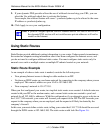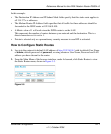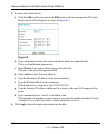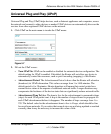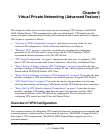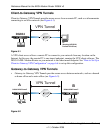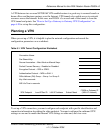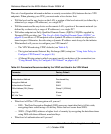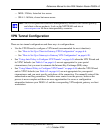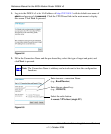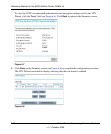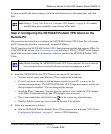
Reference Manual for the ADSL Modem Router DG834 v3
6-4 Virtual Private Networking (Advanced Feature)
v1.1, October 2006
This set of configuration information defines a security association (SA) between the two VPN
endpoints. When planning your VPN, you must make a few choices first:
• Will the local end be any device on the LAN, a portion of the local network (as defined by a
subnet or by a range of IP addresses), or a single PC?
• Will the remote end be any device on the remote LAN, a portion of the remote network (as
defined by a subnet or by a range of IP addresses), or a single PC?
• Will either endpoint use Fully Qualified Domain Names (FQDNs)? FQDNs supplied by
Dynamic DNS providers (see “The Use of a Fully Qualified Domain Name (FQDN)” on
page B-8) can allow a VPN endpoint with a dynamic IP address to initiate or respond to a
tunnel request. Otherwise, the side using a dynamic IP address must always be the initiator.
• What method will you use to configure your VPN tunnels?
— The VPN Wizard using VPNC defaults (see Table 6-2)
— The typical automated Internet Key Exchange (IKE) setup (see “Using Auto Policy to
Configure VPN Tunnels” on page 6-36)
— A Manual Keying setup in which you must specify each phase of the connection (see
“Using Manual Policy to Configure VPN Tunnels” on page 6-46)?
• What level of IPSec VPN encryption will you use?
— DES - The Data Encryption Standard (DES) processes input data that is 64 bits wide,
encrypting these values using a 56 bit key. Faster but less secure than 3DES.
— 3DES - (Triple DES) achieves a higher level of security by encrypting the data three times
using DES with three different, unrelated keys.
• What level of authentication will you use?
Table 6-2. Parameters Recommended by the VPNC and Used in the VPN Wizard
Parameter Factory Default
Secure Association Main Mode
Authentication Method Pre-shared Key
Encryption Method 3DES
Authentication Protocol SHA-1
Diffie-Hellman (DH) Group Group 2 (1024 bit)
Key Life 8 hours
IKE Life Time 1 hour



